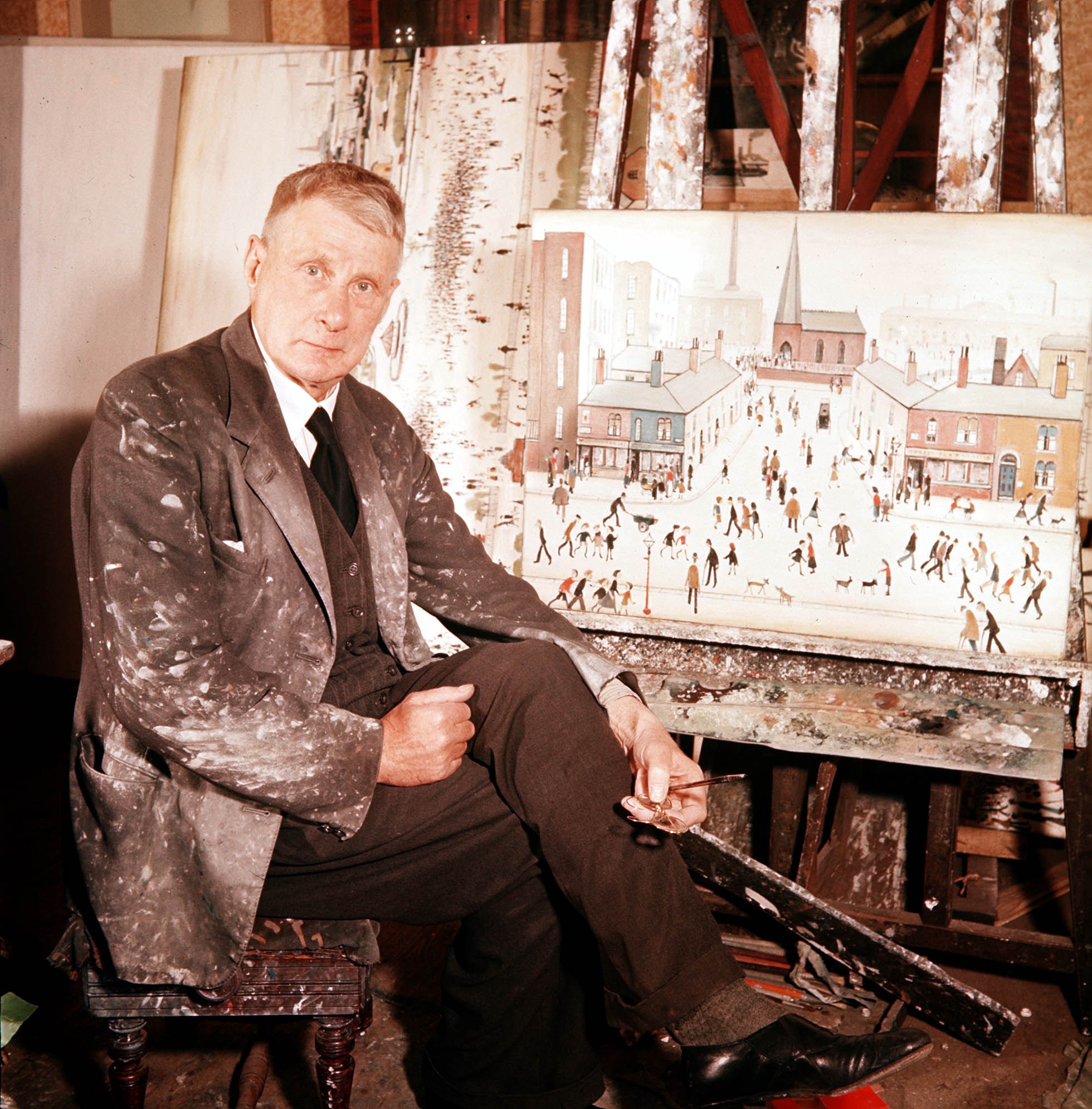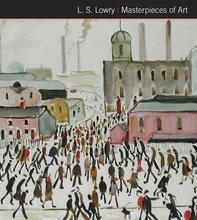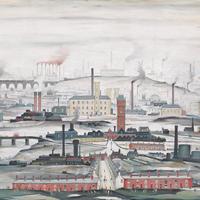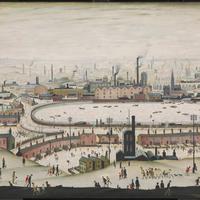More about Laurence Stephen Lowry
- All
- Info
- Shop
Works by Laurence Stephen Lowry

Contributor
Laurence Stephen Lowry is a sort of British equivalent to everyone's favorite "high art" painter in the U.S., the Painter of Light® himself, Thomas Kinkade.
Whereas a significant portion of the U.S. yearns for Kinkade's perpetual QVC holiday cheer, illuminated in fantastically nostalgic houses and idealized landscapes, everyday people in Britain, who may not have any interest in most of the Tate museum's collection, find the perpetual depression of Lowry images magical. When people learned that Lowry painted in the free hours outside of his full-time job as a rent collector, until retiring at age 65, it endeared him even more to his millions of followers, who clamored for tidbits about the odd man from the North. Forgers love to sell fakes of his work, and most critics see him as a pesky fan favorite who won't go away.
A virgin, Lowry befriended many girls on the cusp of womanhood while he was an adult. In his later years, for instance, he showed up randomly at the doorstep of thirteen-year-old Carol Ann Lowry, and they started seeing each other regularly. He only got angry at her once, when she threatened to find out if they were related. For some reason, the girl's mother was fine with all this. Apparently and somewhat incredibly, according to Carol Ann, there was no physical relationship between the two, even after years of dinner dates and other couple-y things, like staying in the same motel "on holiday." The only weird moment, Carol Ann claims, was one time when he escorted her to her room and, as she was closing the door, asked her, "Do you trust me yet?" to which she replied, "Nearly." Something about this story makes my skin crawl, and even makes me feel a little sad for this man who used people's pity for him to attain success.
Lowry willed his £300,000 estate to Carol Ann, including a bunch of drawings of women bound up in uncomfortable positions, one with her areolas bulging out of a Victorian bodice. "In creating these images, he ventured into areas where the human body becomes mechanised; where women, modified by male fantasy, turn into efficient machinery." Maybe it's better, sometimes, when dreams don't come true. But moving right along...
In the U.S., artists like rapper Migos represent the affirmation of Southern dialects in music. In the U.K., Northerners such as Lowry have an equally strong hold on the underdog-loving popular psyche, as they are often overlooked by elite tastemakers in London. In both cases, a subculture emerges on the geographic and economic outskirts of the country. Like his contemporaries A. A. Milne and C. S. Lewis, Lowry took on the formal British style of abbreviating his first and middle names. Unlike Milne and Lewis, however, Lowry only had a family during his childhood, which puts his biography in a special group with a couple of other rare birds, the "serial bachelors" Bill Cunningham, and the equally gloomy Edward Gorey.
Before Gorey, and long before the cutesy-yet-morbid tchotchke-fest that is the Hot Topic retail chain, there was Lowry, filling the imaginations of the British Isles with Eeyore-like "matchstick" people, all headed in different directions, communing in being alone. "I see lots of people everywhere, one lot going one way and the other lot going in the opposite way, as a rule," said Lowry. Somehow, loneliness always brings people together.
Sources
- Adams, Tim. "Lowry's Secret Life." The Guardian, Mar. 18, 2000, https://www.theguardian.com/books/2000/mar/19/art.
- Bird, Geoff. "Taking a fresh look at LS Lowry." BBC News, Jun. 24, 2013, https://www.bbc.com/news/entertainment-arts-22987458.
- Klee, Earl. "A Peopled Landscape: An Appreciation of L.S. Lowry." Minnesota Review 10 (1978): 33-42.
- Levin, Angela. "The dark side of the matchstick man: Painter L.S. Lowry never married or had a girlfriend. But the woman he befriended as a child now tells of their bizarre relationship." Daily Mail, Apr. 16, 2011, https://www.dailymail.co.uk/news/article
- "Mrs Lowry and Son." IMDb, https://m.imdb.com/title/tt7590074/.
- Rohde, Shelley. L.S. Lowry: a biography. Salford, UK: Lowry Press, 1999.
- Viner, Brian. Ears of the Wolf. Hertford, UK: M-Y Books Limited, 2012.
Featured Content
Here is what Wikipedia says about L. S. Lowry
Laurence Stephen Lowry RBA RA (/ˈlaʊri/ LAO-ree; 1 November 1887 – 23 February 1976) was an English artist. His drawings and paintings mainly depict Pendlebury, Greater Manchester (where he lived and worked for more than 40 years) as well as Salford and its vicinity.
Lowry painted scenes of life in the industrial districts of North West England in the mid-20th century. He developed a distinctive style of painting and is best known for his urban landscapes peopled with human figures, often referred to as "matchstick men". He painted mysterious unpopulated landscapes, brooding portraits and the unpublished "marionette" works, which were only found after his death. He was fascinated by the sea, and painted pure seascapes, depicting only sea and sky, from the early 1940s.
His use of stylised figures which cast no shadows, and lack of weather effects in many of his landscapes led critics to label him a naïve "Sunday painter".
Lowry holds the record for rejecting British honours—five, including a knighthood (1968). A collection of his work is on display in The Lowry, a purpose-built art gallery on Salford Quays. On 26 June 2013, a major retrospective opened at the Tate Britain in London, his first at the gallery; in 2014 his first solo exhibition outside the UK was held in Nanjing, China.
Check out the full Wikipedia article about L. S. Lowry













